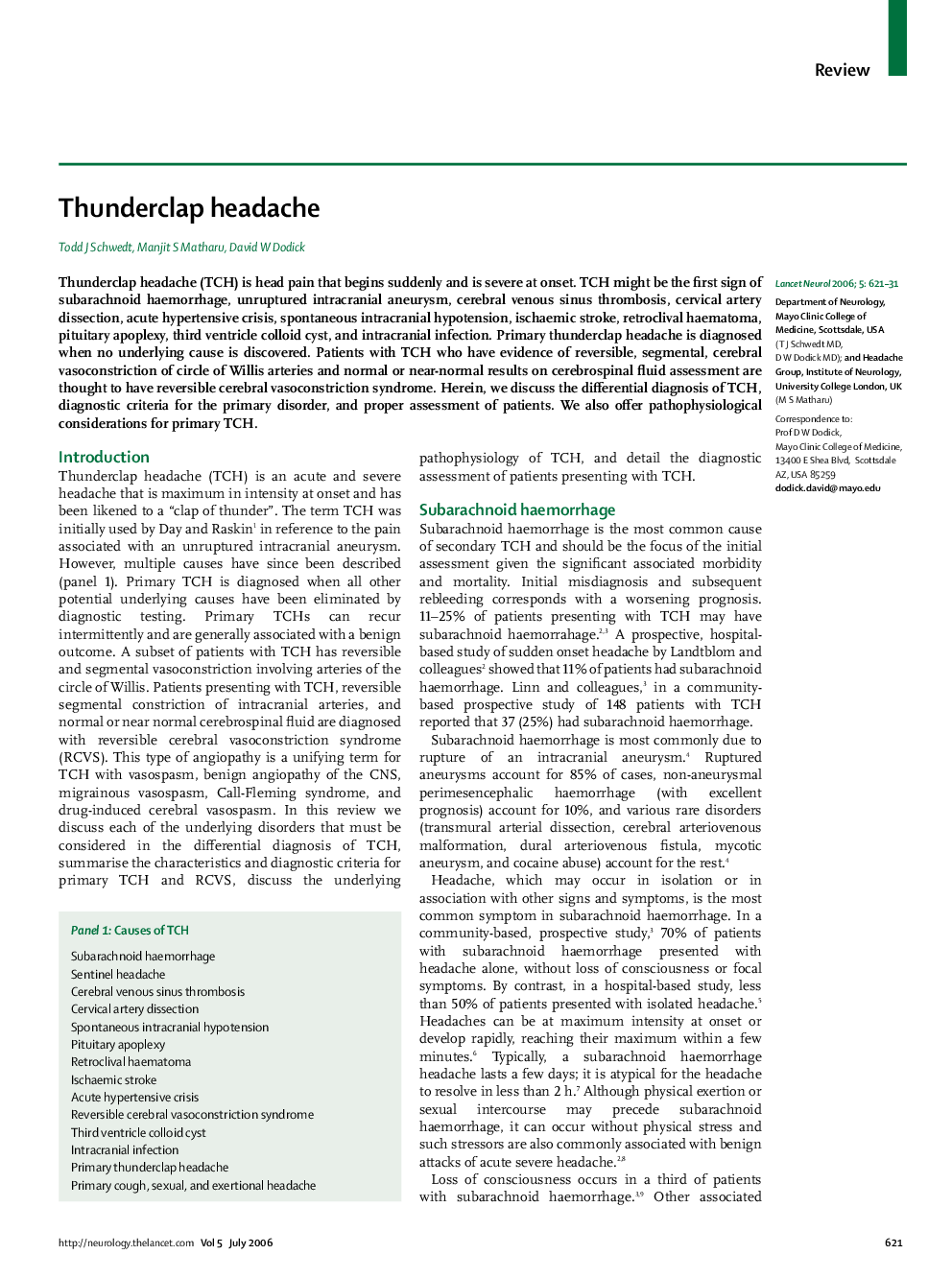| Article ID | Journal | Published Year | Pages | File Type |
|---|---|---|---|---|
| 3068062 | The Lancet Neurology | 2006 | 11 Pages |
SummaryThunderclap headache (TCH) is head pain that begins suddenly and is severe at onset. TCH might be the first sign of subarachnoid haemorrhage, unruptured intracranial aneurysm, cerebral venous sinus thrombosis, cervical artery dissection, acute hypertensive crisis, spontaneous intracranial hypotension, ischaemic stroke, retroclival haematoma, pituitary apoplexy, third ventricle colloid cyst, and intracranial infection. Primary thunderclap headache is diagnosed when no underlying cause is discovered. Patients with TCH who have evidence of reversible, segmental, cerebral vasoconstriction of circle of Willis arteries and normal or near-normal results on cerebrospinal fluid assessment are thought to have reversible cerebral vasoconstriction syndrome. Herein, we discuss the differential diagnosis of TCH, diagnostic criteria for the primary disorder, and proper assessment of patients. We also offer pathophysiological considerations for primary TCH.
